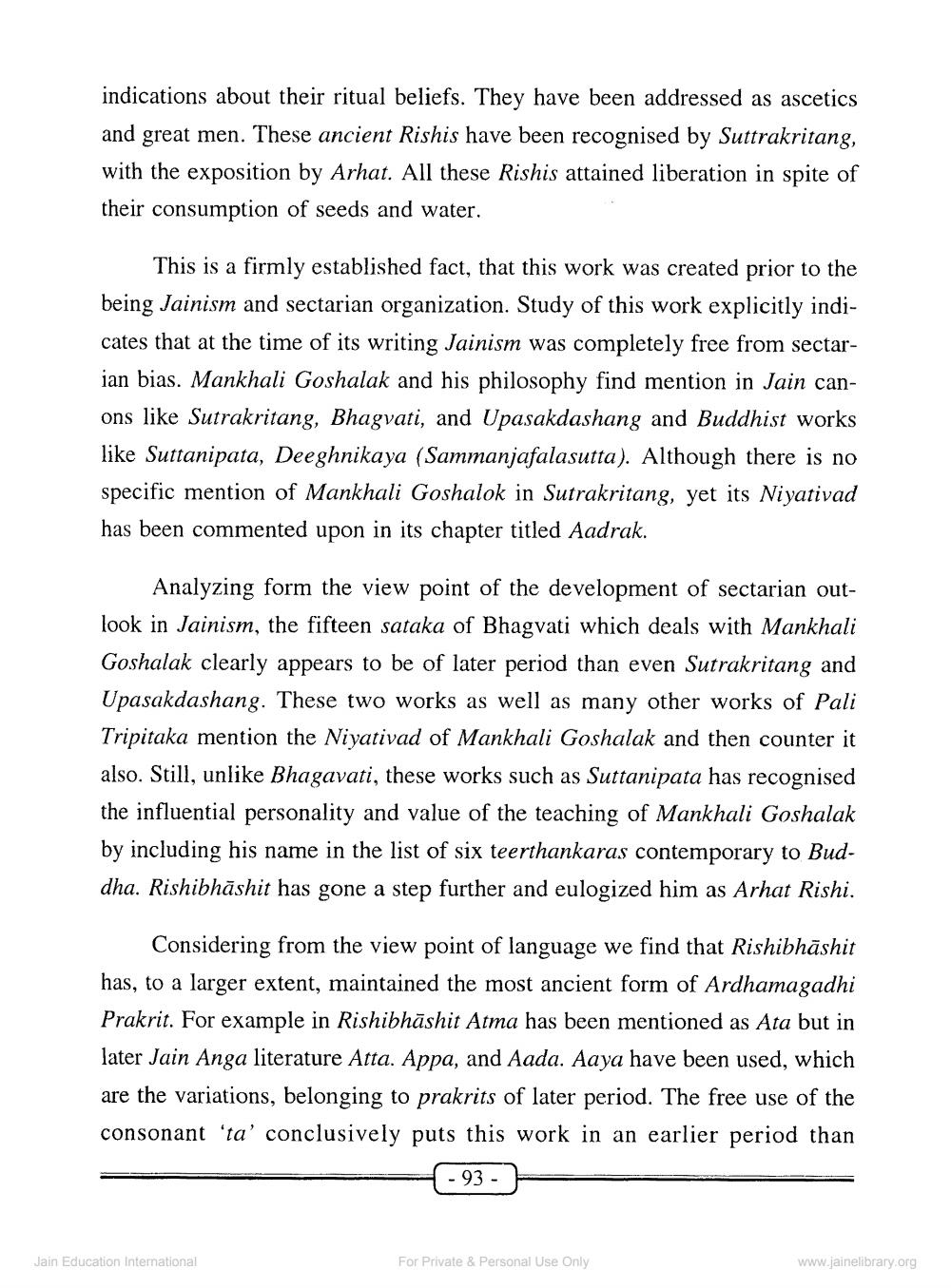________________
indications about their ritual beliefs. They have been addressed as ascetics and great men. These ancient Rishis have been recognised by Suttrakritang, with the exposition by Arhat. All these Rishis attained liberation in spite of their consumption of seeds and water.
This is a firmly established fact, that this work was created prior to the being Jainism and sectarian organization. Study of this work explicitly indicates that at the time of its writing Jainism was completely free from sectarian bias. Mankhali Goshalak and his philosophy find mention in Jain canons like Sutrakritang, Bhagvati, and Upasakdashang and Buddhist works like Suttanipata, Deeghnikaya (Sammanjafalasutta). Although there is no specific mention of Mankhali Goshalok in Sutrakritang, yet its Niyativad has been commented upon in its chapter titled Aadrak.
Analyzing form the view point of the development of sectarian outlook in Jainism, the fifteen sataka of Bhagvati which deals with Mankhali Goshalak clearly appears to be of later period than even Sutrakritang and Upasakdashang. These two works as well as many other works of Pali Tripitaka mention the Niyativad of Mankhali Goshalak and then counter it
1, unlike Bhagavati, these works such as Suttanipata has recognised the influential personality and value of the teaching of Mankhali Goshalak by including his name in the list of six teerthankaras contemporary to Buddha. Rishibhāshit has gone a step further and eulogized him as Arhat Rishi.
Considering from the view point of language we find that Rishibhāshit has, to a larger extent, maintained the most ancient form of Ardhamagadhi Prakrit. For example in Rishibhāshit Atma has been mentioned as Ata but in later Jain Anga literature Atta. Appa, and Aada. Aaya have been used, which are the variations, belonging to prakrits of later period. The free use of the consonant 'ta' conclusively puts this work in an earlier period than
-93 -
Jain Education International
For Private & Personal Use Only
www.jainelibrary.org




